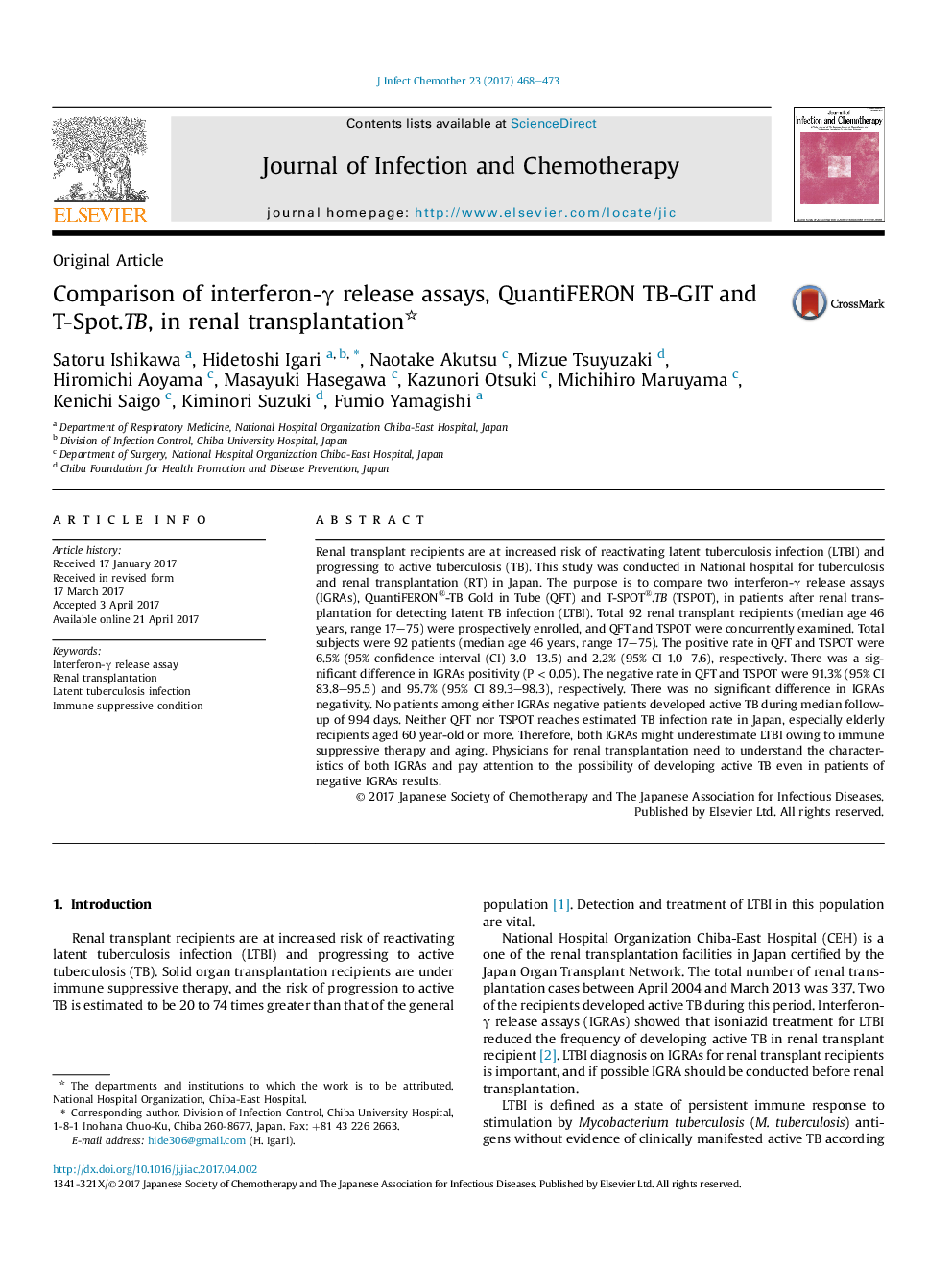| Article ID | Journal | Published Year | Pages | File Type |
|---|---|---|---|---|
| 5668940 | Journal of Infection and Chemotherapy | 2017 | 6 Pages |
Renal transplant recipients are at increased risk of reactivating latent tuberculosis infection (LTBI) and progressing to active tuberculosis (TB). This study was conducted in National hospital for tuberculosis and renal transplantation (RT) in Japan. The purpose is to compare two interferon-γ release assays (IGRAs), QuantiFERON®-TB Gold in Tube (QFT) and T-SPOT®.TB (TSPOT), in patients after renal transplantation for detecting latent TB infection (LTBI). Total 92 renal transplant recipients (median age 46 years, range 17-75) were prospectively enrolled, and QFT and TSPOT were concurrently examined. Total subjects were 92 patients (median age 46 years, range 17-75). The positive rate in QFT and TSPOT were 6.5% (95% confidence interval (CI) 3.0-13.5) and 2.2% (95% CI 1.0-7.6), respectively. There was a significant difference in IGRAs positivity (P < 0.05). The negative rate in QFT and TSPOT were 91.3% (95% CI 83.8-95.5) and 95.7% (95% CI 89.3-98.3), respectively. There was no significant difference in IGRAs negativity. No patients among either IGRAs negative patients developed active TB during median follow-up of 994 days. Neither QFT nor TSPOT reaches estimated TB infection rate in Japan, especially elderly recipients aged 60 year-old or more. Therefore, both IGRAs might underestimate LTBI owing to immune suppressive therapy and aging. Physicians for renal transplantation need to understand the characteristics of both IGRAs and pay attention to the possibility of developing active TB even in patients of negative IGRAs results.
